 When you hear the phrase “speed training,” it’s easy to picture elite athletes—sprinters blasting off the line or pros flying down the field. But speed training isn’t reserved for them. Anyone can benefit from learning to move more efficiently, react faster, and generate more power. In fact, adding a little speed work to your weekly routine can help you feel stronger, more coordinated, and more confident in your movement—whether you’re running, lifting, or chasing your kids around the yard.
When you hear the phrase “speed training,” it’s easy to picture elite athletes—sprinters blasting off the line or pros flying down the field. But speed training isn’t reserved for them. Anyone can benefit from learning to move more efficiently, react faster, and generate more power. In fact, adding a little speed work to your weekly routine can help you feel stronger, more coordinated, and more confident in your movement—whether you’re running, lifting, or chasing your kids around the yard.
What Is Speed Training?
Although speed training is most often used to improve athletic performance, it’s more than just running fast. It’s a structured way of teaching your body how to move quickly, efficiently, and under control. At its roots, speed training combines technique, strength, and cognition to help you generate force rapidly and apply it in the right direction, a skillset valuable in any physical activity.
A few key concepts to consider in the realm of speed training:
- Rate of Force Development (RFD): A useful metric that measures the production of maximal force in a minimal amount of time.
- Acceleration: Building and developing speed, from a moving or stationary start position.
- Impulse: The ability to turn strength into speed through the rapid application of the force your body can produce.
- Mechanics: The technical side of movement, like stride length, stride frequency, and posture.
While these principles might sound like they belong solely in sports performance, they have direct benefits for everyday fitness. Improving your acceleration and agility doesn’t just matter on a soccer field or track. It can also help you move more confidently in the gym, in recreational exercise, or even in activities of daily living like climbing stairs or avoiding a misstep.
The Fundamentals of Speed Training
Speed training can be complex, but the fundamentals are straightforward. The goal is to train your body to produce more force in less time, which translates into faster, more efficient movement. A well-rounded approach combines physical strength, sharp cognitive skills, sound mechanics, and focused sprint work.
1. Strength & Power Training
Strength is your base. Classic lower-body exercises like squats, deadlifts, and lunges build the muscles that drive acceleration. To turn that strength into speed, add plyometric exercises—like bounding, jump squats, or box jumps. These movements train your muscles and nervous system to fire faster.
Try focusing on speed of movement during lifts (for example, standing up from a squat with controlled power). Over time, this helps your body produce force more explosively.
2. Perceptual-Cognitive Training
Speed isn’t just physical—it’s mental. In sports, athletes constantly react to changing environments. You can train that same skill by practicing reactive drills—for example, sprinting or changing direction based on a partner’s hand signal, color cue, or verbal command.
For everyday fitness, this type of training keeps your brain sharp while improving your body’s ability to move efficiently under pressure.
3. Mechanics & Technique
Good form equals free speed. Focusing on posture, stride rhythm, and arm drive helps prevent wasted effort. Incorporate simple drills like A-skips, B-skips, or wall drives to reinforce correct sprinting patterns.
Even if you’re not sprinting regularly, these drills improve coordination and lower injury risk by teaching your body to move more purposefully.
4. Sprint & Agility Work
This is where it all comes together. Short, explosive sprints, resisted runs, or cone agility drills develop quickness, deceleration, and control. Keep sessions brief, with generous rest, to maximize effort and recovery.
Whether you’re racing a friend or simply want to move with more precision, sprint and agility training builds the confidence to move faster—and safer—in everyday life.
Getting Started
If you’re new to this style of training, start small: add a few sprints at the end of a workout, or try a short plyometric circuit once a week. As you build confidence, you can progress to more structured programs.
Looking for guidance? Our trainers at NIFS can help you integrate speed training into your fitness routine in a safe, personalised way. Call us or book a free fitness assessment and exercise prescription at the track desk!

.jpg?width=493&height=288&name=GettyImages-1158207879(1).jpg) Fitness center amenities, such as a Sauna or Steam room are amongst the most popular for members of all ages. Members seek these amenities for potential benefits for physical and mental well-being. In this blog, you will learn some potential benefits of using these amenities.
Fitness center amenities, such as a Sauna or Steam room are amongst the most popular for members of all ages. Members seek these amenities for potential benefits for physical and mental well-being. In this blog, you will learn some potential benefits of using these amenities.
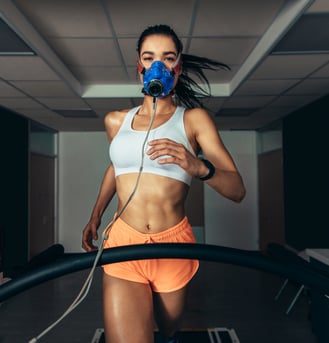 VO2 max testing, or graded exercise testing, is a treadmill run or cycle to volitional fatigue—or pretty much going until you must stop. The test will tell us how many liters of oxygen you are able to take in and use for cellular respiration.
VO2 max testing, or graded exercise testing, is a treadmill run or cycle to volitional fatigue—or pretty much going until you must stop. The test will tell us how many liters of oxygen you are able to take in and use for cellular respiration. 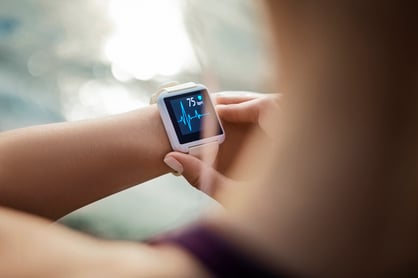 While training your cardiovascular system, it is important to understand how much you are stressing and overloading the system. Just like with your musculoskeletal system, there is a maximum rate your heart can achieve. The best way to discover this number is to undergo a maximal aerobic capacity test, but it isn’t necessarily practical or safe for all populations.
While training your cardiovascular system, it is important to understand how much you are stressing and overloading the system. Just like with your musculoskeletal system, there is a maximum rate your heart can achieve. The best way to discover this number is to undergo a maximal aerobic capacity test, but it isn’t necessarily practical or safe for all populations. 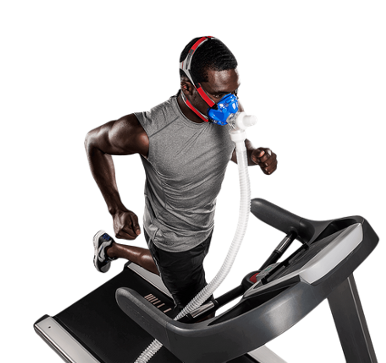 Fitness trends come and go, but heart-rate training is something that has been around for a long time; and due to its validity, I have a feeling it will not be leaving anytime soon. In fact, some places base their entire programming around your heart rate. And knowing your heart-rate training zone is actually a very useful tool for anyone—from the marathon runner to the three-times-a-week boot camp attendee!
Fitness trends come and go, but heart-rate training is something that has been around for a long time; and due to its validity, I have a feeling it will not be leaving anytime soon. In fact, some places base their entire programming around your heart rate. And knowing your heart-rate training zone is actually a very useful tool for anyone—from the marathon runner to the three-times-a-week boot camp attendee!
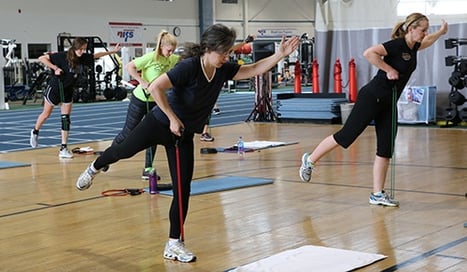 If you take a few minutes to google the various types of fitness training out there, you will come up with a list of about 10 different ones, and then 10 more different variations of each of those. And each year more and more “fitness trends” come out, making it quite confusing for the consumer as to what to choose and where to start. It can be confusing and even frustrating choosing what is right for you and your body.
If you take a few minutes to google the various types of fitness training out there, you will come up with a list of about 10 different ones, and then 10 more different variations of each of those. And each year more and more “fitness trends” come out, making it quite confusing for the consumer as to what to choose and where to start. It can be confusing and even frustrating choosing what is right for you and your body. 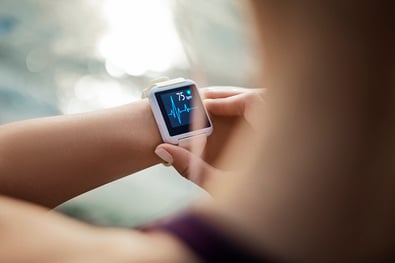 This type of training is specific to each individual and their personal zones. You can read more
This type of training is specific to each individual and their personal zones. You can read more 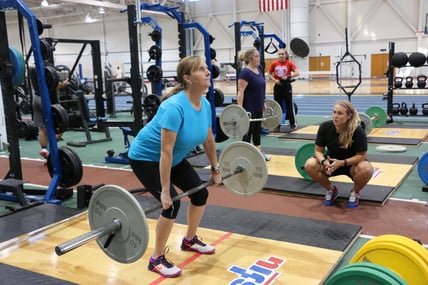 Strength training typically is done with heavy weight but can be done with lighter ones as well. This style of training is directly associated with Newton’s law: mass x acceleration = force.
Strength training typically is done with heavy weight but can be done with lighter ones as well. This style of training is directly associated with Newton’s law: mass x acceleration = force.  The New Year is just around the corner and many will be out to improve themselves on many levels in 2021, with health and fitness usually being number one on the list. If losing weight, increasing lean muscle tissue, and sculpting a lower half that will certainly turn heads, while all at the same time improving your heart health is what you are looking for, I have one answer. The use of sprints in the world of fitness and sport performance is nothing exceptionally new, but can be new to you. Actually, sprinting (fast, short bouts of running) was used to stay alive long before we used it as a mode of training.
The New Year is just around the corner and many will be out to improve themselves on many levels in 2021, with health and fitness usually being number one on the list. If losing weight, increasing lean muscle tissue, and sculpting a lower half that will certainly turn heads, while all at the same time improving your heart health is what you are looking for, I have one answer. The use of sprints in the world of fitness and sport performance is nothing exceptionally new, but can be new to you. Actually, sprinting (fast, short bouts of running) was used to stay alive long before we used it as a mode of training.  We know it is encouraged by fitness professionals, and included at the end of group exercise classes, but I want to ask you, personally: how many times after a workout do you actually take the time to cool down?
We know it is encouraged by fitness professionals, and included at the end of group exercise classes, but I want to ask you, personally: how many times after a workout do you actually take the time to cool down?  There are several different ways that you can train. Common training methods are interval training, total time and sets/reps, but heart rate training is
There are several different ways that you can train. Common training methods are interval training, total time and sets/reps, but heart rate training is